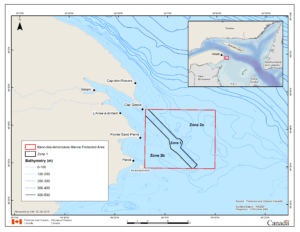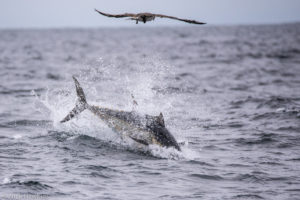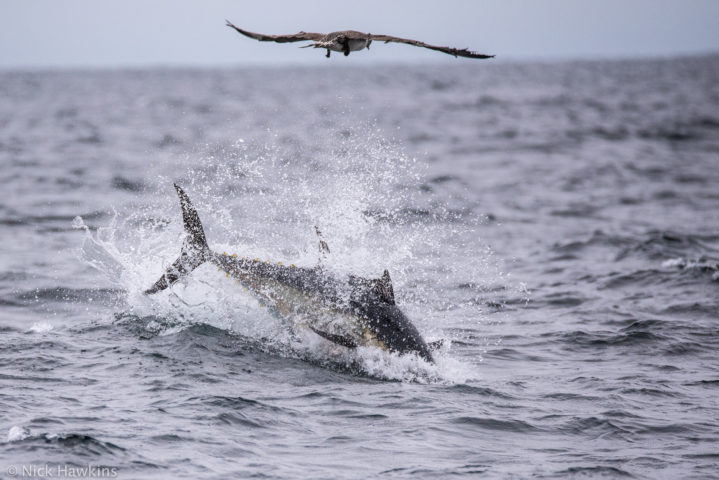The Banc-des-Américains (American Bank) Marine Protected Area (MPA) received final approval on March 6, 2019 and is now the largest offshore protected area in the Gulf of Saint Lawrence (GSL). The final boundaries are shown below and encompass an area of one thousand square kilometres (1,000 km2).

Protection objectives for the area are to promote the productivity and diversity of fisheries resources (species fished) and the recovery of species at risk. Many species of fish frequent the site because of the quality of the habitat of the ridge and the adjacent plains. As well, many whale species congregate in this general area including the endangered blue whale and the critically-endangered North Atlantic right whale.
The Banc-des-Américains is the first joint project under the Canada-Quebec Collaborative Agreement for the Establishment of a Network of Marine Protected Areas in Quebec. This area will have dual status: an aquatic reserve under Quebec law, and a designated marine protected area under the Oceans Act. The Banc-des-Américains MPA is the federally-regulated portion of the joint Canada-Quebec project for marine protected areas.
The Conservation Council of New Brunswick is celebrating 50 years of environmental protection this year, and we have a long and strong track record of advocating for our shared marine resources. We have recently hired a fisheries specialist to work with communities on the north shore of the province and to specifically monitor activities in the Gulf of Saint Lawrence, including this new MPA.
The Conservation Council recognizes and acknowledges the hard work and dedicated energy of our colleagues in conservation at SNAP Quebec who did the heavy lifting on this file. Although many marine conservation groups played a role in keeping the Department of Fisheries and Oceans on task and on schedule, the team at SNAP Quebec played a leadership role here, and without their continued guidance and advocacy, the process may have taken a lot longer.
La SNAP Québec se réjouit de l’annonce officielle de la création de l’aire marine protégée du Banc-des-Américains en Gaspésie, résultat de plusieurs années de consultation et de concertation! https://t.co/GWw7wmoad0 @MELCC_Qc @PechesOceansCAN @AShields_Devoir @JonathanWNV pic.twitter.com/MtBJJof9pa
— SNAP Québec (@snapqc) March 6, 2019
It is important to remember that static, individual protected areas, whether they be on land or in the ocean, only serve to protect biodiversity that stays within the boundaries of the space. Migratory marine animals like whales, tuna and many other fish species do not respect human-drawn lines on a map. Further, climate change is already significantly impacting the Gulf of Saint Lawrence and these impacts are slated to increase. North Atlantic right whales are moving into the GSL more and more consistently because their preferred food source is moving north in response to warming waters. This pattern of movement, from both sedentary and mobile species, will continue as the climate warms.
One mechanism to safeguard marine biodiversity in the face of climate change and animal movement is to create a network of protected spaces that are connected across the marinescape. The DFO has made good efforts to begin this process, and have even gone as far as producing a strategic plan for a protected areas network with the GSL region. The DFO defines this as “a collection of individual marine protected areas that operates complementary and synergistically, at various spatial scales, and with a range of protection levels, in order to fulfill ecological aims more effectively and comprehensively than individual sites could do alone.”

While we applaud the efforts of DFO for their work on the American Bank MPA, we also call on our government colleagues to release their MPA network plans so that Indigenous Nations around the Gulf, Gulf fisheries, environmental groups and other stakeholders can help DFO implement a plan that protects the environment and local livelihoods for the long term. Our oceans, our resources, and indeed our livelihoods, depend on it.
—Matt Abbott is the Conservation Council’s Fundy Baykeeper. He is based in St. Andrews, N.B.

